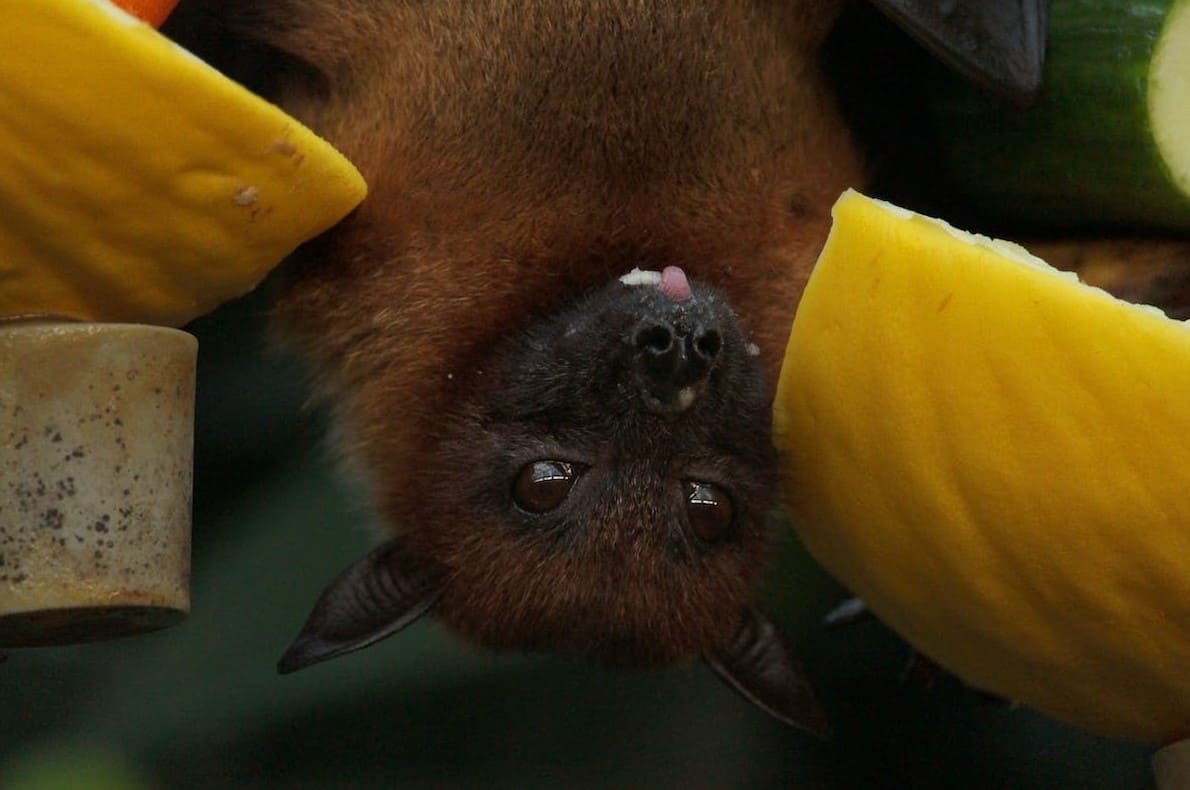Inasmuch as we want to save the bees, we do so not at the expense of other animals that we think are their predators.
We want to save the bees, but we want to save the bats too! Do these bats eat the bees?
What do Bats Eat?
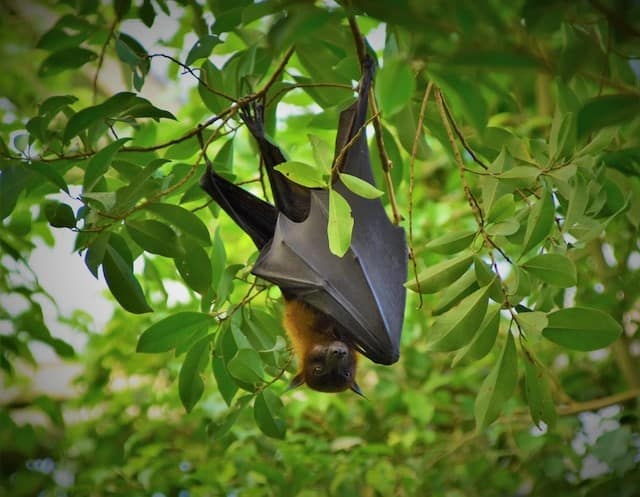
Insects
Of the over 1,400 bat species in the world, the majority of them are insectivorous, meaning they feed on insects, primarily.
Bats are great contributors to reducing bothersome and non-beneficial small animals around us. For one, a single bat can consume around 700 mosquitoes and insects in a night.
Bats love gobbling insects, wasps, bugs, and other nocturnal small animals that roam when it is dark. They are the largest predators of insects that bother us in our sleep.
In the U.S., there are about 40 species of bats that consume nothing but insects.
Through animal echolocation, bats are able to detect the presence of insects. Once a bat locates an insect, it proceeds to trap the insect using its tail or wings and bring it to its mouth.
Fruits, Pollen, and Nectar
Other bat species feed on a combination of fruits, pollen, nectar, and seeds.
Other bat species eat fruits, nectars, and pollen. As an exception, some fruit-eating bats are awake during the daytime to look for fruits to sustain their energy to live.
Animal Blood
Of course, this comes with some exceptions. Take, for instance, the vampire bats (Desmodus rotundus). These vampire bats feed solely on animal (and even human) blood.
Do Bats eat Bees?
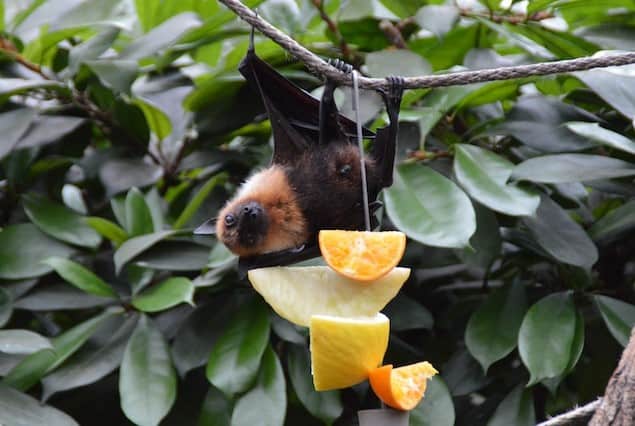
When the night bats are out, they generally eat anything that flies along their way. Flying insects are their most common prey.
So, would a bat eat a bee?
Bees are diurnal insects. They are awake and active in the daytime, searching for food. During the nighttime, they go back to their hives to rest.
On the other hand, bats are nocturnal animals, generally. Most bat species are asleep during the daytime and are active in hunting during the nighttime.
Due to these differing schedules, bats are unlikely to encounter bees during their most active hours, and it would be rare for bees to come across a bat during the day. It is most unlikely, then, that bats would gobble down our bees.
However, it goes without saying that when a bee comes across a bat’s path, the bat would most likely eat the bee without second thoughts.
A Few Exceptions
A carpenter bee is a solitary insect that flies alone. It lacks the stripes that honeybees are prominent for. In fact, carpenter bees look more like moths or bugs in the eyes of a bat. This poses a tempting delicacy for a bat if ever this bee comes across the bat’s path.
Bats eat carpenter bees if the latter come their way. Despite the carpenter bee’s capability to sting, it would not stand a chance when bats are the predators.
The Indian carpenter bee, for instance, is known as an active worker when darkness falls. This bee species is known to have a strong photoreceptor, giving them night vision and allowing them to stay active in the dark.
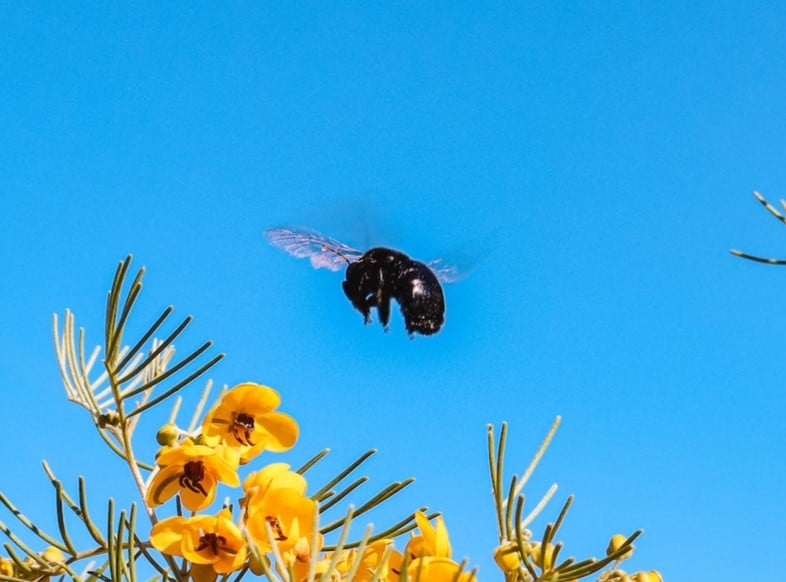
While most honey bees are diurnal, there are also two species that forage during the night. These are the African honeybee and the giant Asian honeybee.
These two bee species are known to be active at twilight (crepuscular) or even at night when there is enough moonlight to light their paths.
So, while bats do not generally eat bees, it comes with an exception. It is most likely then that the Indian carpenter bee, African honeybee, and the giant Asian honeybee would fall prey to bats at night.
Will Bats Attack a Hive While the Bees Are Asleep?
Will bats hunt a beehive at night? This is one important question that pops up when we think of bats as night predators. Can you imagine a bat attacking a bee hive with all the bees inside?
Well, we can all rest assured. Bats are unlikely to attack beehives at night to hunt for bees. There are a few reasons why this is not likely to happen.
Beehives are too close to the ground.
Bats are high-flying animals and seldom fly down low just to get to their prey. Bats are not capable of taking off from the ground. Once a bat is in an upright position, it will have difficulty flying. By nature, bats sleep upside down as it aids in their easy take-off when necessary.
A bat’s diet includes a variety of food sources, such as wasps, moths, bugs, and other insects. These are abundant, and bats will not resort to attacking a hive when most bees are asleep just to gather food. Feeding on flying insects would be enough.
Bats target flying insects.
Bats are more prone to prey on moving insects than static ones. A flying insect easily gets a bat’s attention.
An unmoving hive would not pose an attraction for bats. For one, the hive would be too low than the bat’s eye level. Bats would prefer those that move and fly at their level.
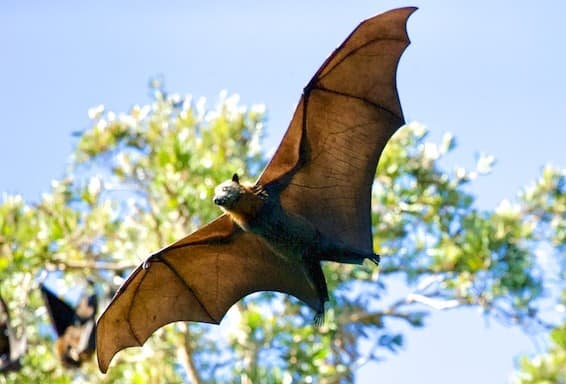
Bats and Bees Can Co-Exist
As these bats roam and fly from one flower to another, they act as pollinators and are effective at it too! In fact, in some parts of North America, bats are known as the key contributors to the pollination of the flowers of the agave plants, saguaro, and pipe cacti.
Bats pollinate flowers when they get nectar and pollen. Flowers get the best of both worlds when it comes to pollination when the bees pollinate during the daytime, and the bats pollinate at nighttime.
Bats feed on bugs and insects that can harm plants. It prevents decimating the crops and increases fruit production and harvest. At the same time, it provides healthier plants and flowers where bees can get enough nectar and pollen to make honey.
Bats and bees can live in harmony, each working to keep the ecosystem thriving!
